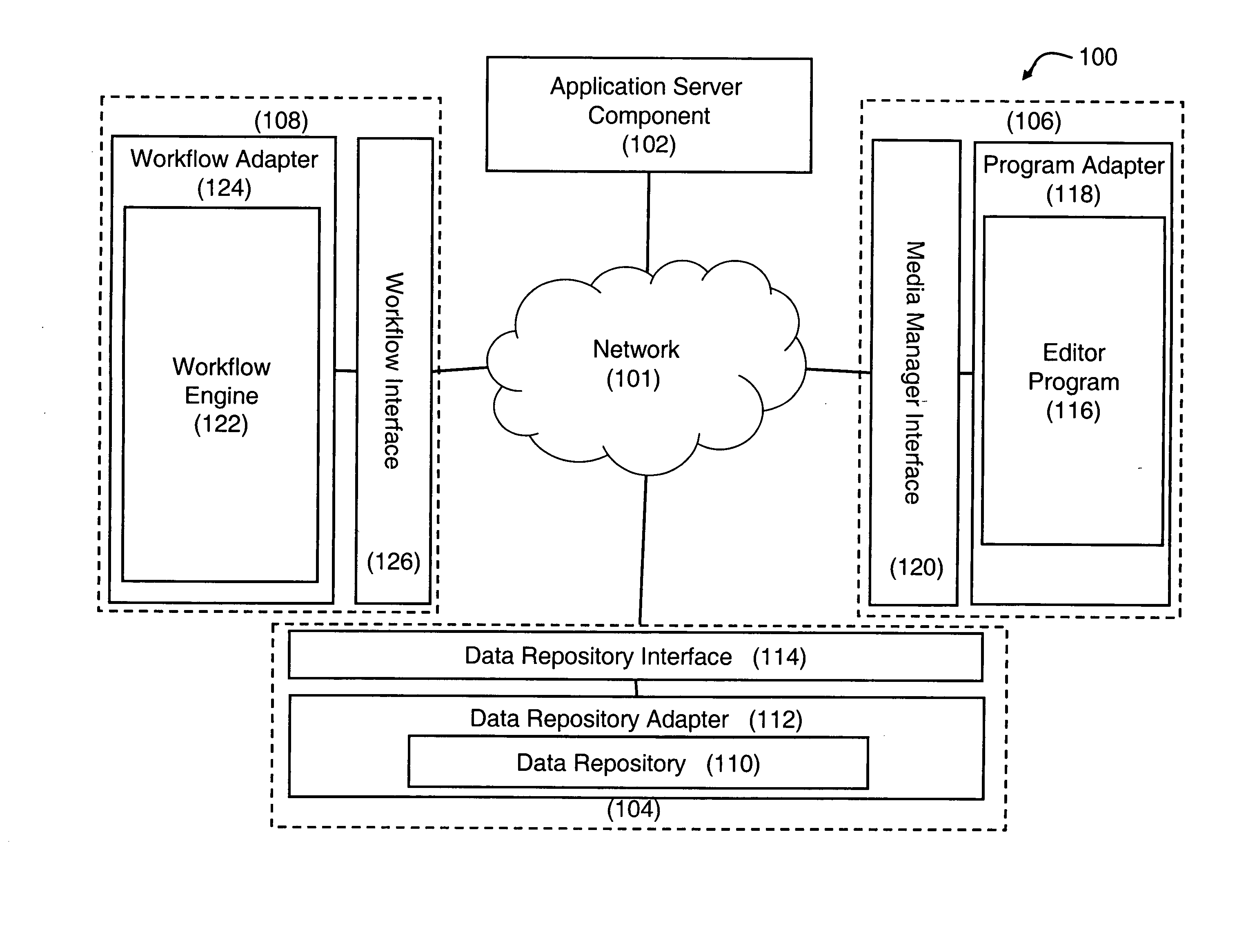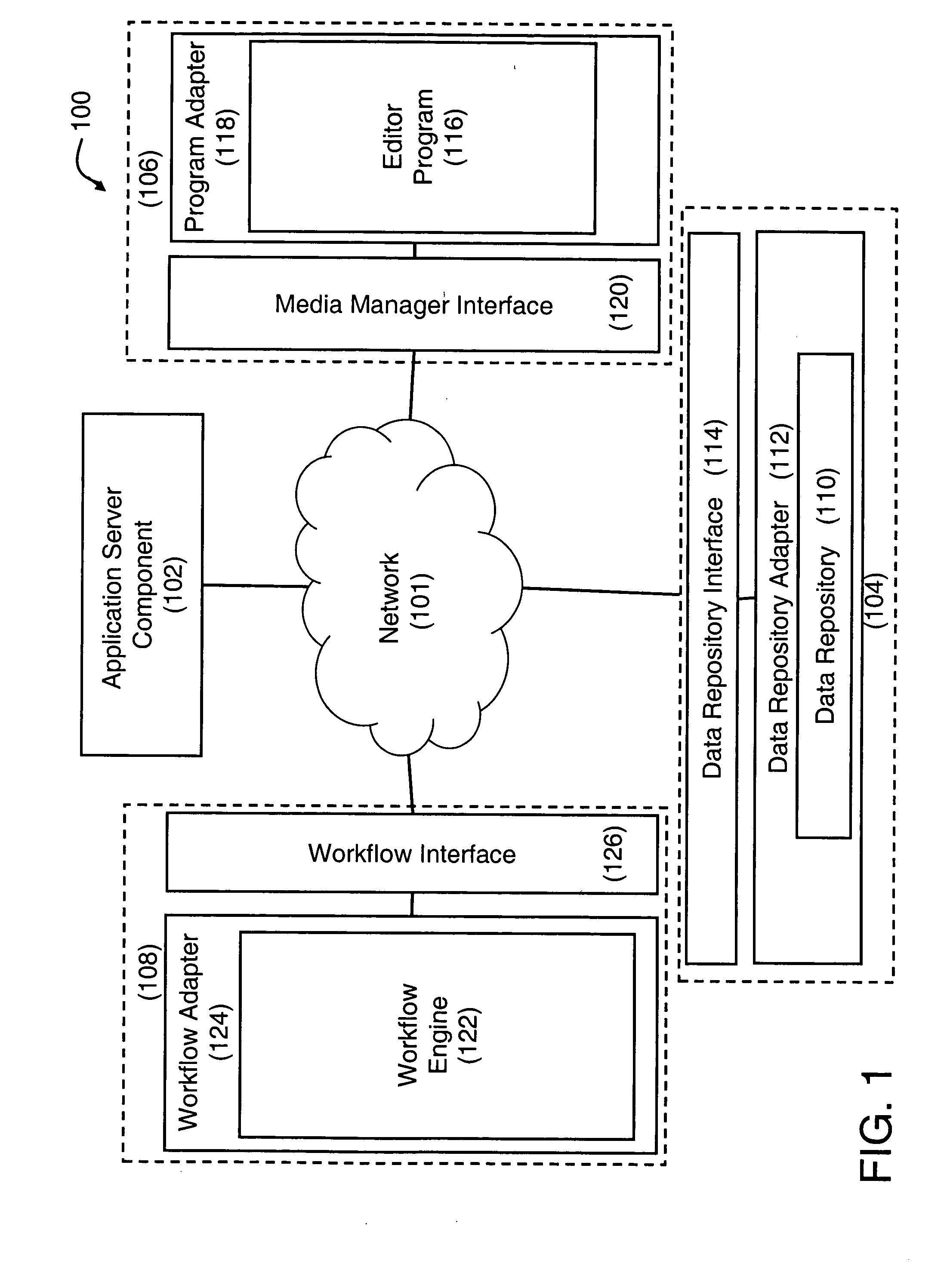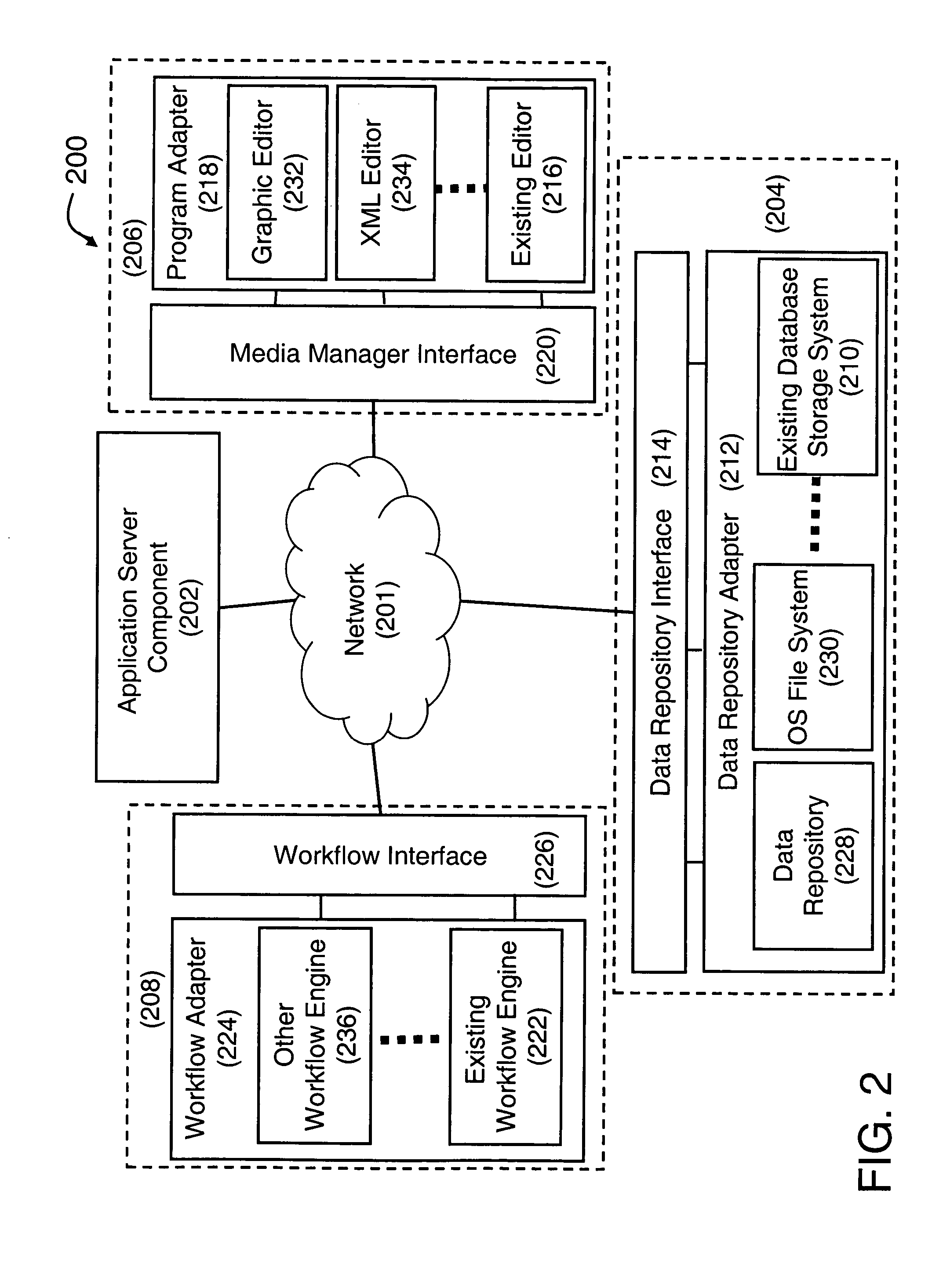While a great deal of the creation, management and publication of documentation (hereinafter “the documentation lifecycle”) takes place in
electronic form, the efficiencies companies thought would be achieved by storing the information electronically has not been realized.
However, the adoption and use of electronic authoring, storage and publication technology as has been done in prior systems, has, in and of itself, not provided the ability to effectively manage and control this information.
Prior documentation systems have and do not provide the ability to create, manage and publish documentation from a single source of information.
Additionally, prior documentation systems do not enable one to effectively to re-use information.
It is also not likely that the
software employed will be integrated.
There are several drawbacks to the manual coordination approach, even when it is used on a relatively small scale.
These drawbacks also make the manual coordination approach extremely difficult to manage even on a small scale.
One drawback of the manual coordination approach is that it is susceptible to document consistency problems.
Maintaining consistency of information in any different versions can be problematic, and depending on the frequency and nature of changes to the information, maintaining consistency is not always feasible.
Document consistency problems are possible when information comes from multiple sources as opposed to coming from a single source.
Multiple sources permit consistency problems to arise at any point in the documentation cycle especially when managing or publishing documentation.
Consistency problems may also lead to document version control issues.
This second approach also suffers from several drawbacks.
One such drawback to the all-in-one approach is that such systems are proprietary, closed systems.
A problem encountered with this is that information stored in such a system is not stored in a format that is based on industry standards.
This means that it may be quite difficult to import or merge work done in a
third party application into a proprietary all-in-one system.
Another drawback is that while an all-in-one approach may provide integration of the components in the all-in-one system, the components may not necessarily be the most preferred components to accomplish any one task, much less accomplish one of the stages of the documentation cycle.
Thus, the drawback to an all-in-one system that performs some or all of the functions of the documentation lifecycle, is that the all-in-one system may not perform any one task especially well.
Another drawback of prior approaches using an all-in-one
documentation system is that a cost associated with adopting and using a proprietary all-in-one system is multi-faceted and is many times expensive.
Initially, the cost of
license fees to purchase a proprietary system can be expensive.
Next, it is likely that one can expect to incur training expenses so existing personnel can use the proprietary system.
Next, in the case of a proprietary all-in-one system, there is a cost associated with not being able to re-use existing components that may already be in place.
This expense can be considerable as it is not uncommon for a business to have existing web servers,
database systems, authoring tools, and publication tools which can no longer be used with an all-in-one
documentation system.
As such, these closed documentation systems tend to be inflexible and do not scale well to adapt to changing needs.
Due to the expense involved, the all-in-one approach has not been widely adopted or found particular favor.
Another drawback that is common to prior systems is that these systems do not utilize the content and structure of stored information.
A consequence of the document-centric approach of managing simple document objects is that it is not possible to easily reuse information contained in a document, without creating a copy of the original document, and then making a
derivative work, another version of the document.
A limitation of existing documentation systems due to the provision of inadequate document reuse is that existing systems do not provide the ability for the creation, management and publication of
technical information from a single source.
As previously mentioned, one of the drawbacks to an all-in-one approach is that information contained in prior systems is often stored in a
proprietary format.
As also previously mentioned, prior all-in-one systems tend to be inflexible.
For example, in prior systems, once the
data structure for the data repository has been established, subsequent modifications to the
data structure cannot be easily made.
In some cases, it is not possible to change the data structure at all.
In prior systems where it is possible to change the data structure, making such a change may be quite costly.
The expense is due to the fact that it is often necessary to rewrite major portions of the system and modify system components in order make changes to the data structure in prior all-in-one systems.
Accommodating these requirements often affect the storage, searching, and distribution functions of documentation systems.
A drawback to prior systems is that adding a new
content type, such as video or audio content, has involved
rewriting all, or most of the parts of the system.
Making changes to the data structure of a prior system tends to be both difficult and expensive.
 Login to View More
Login to View More  Login to View More
Login to View More 


